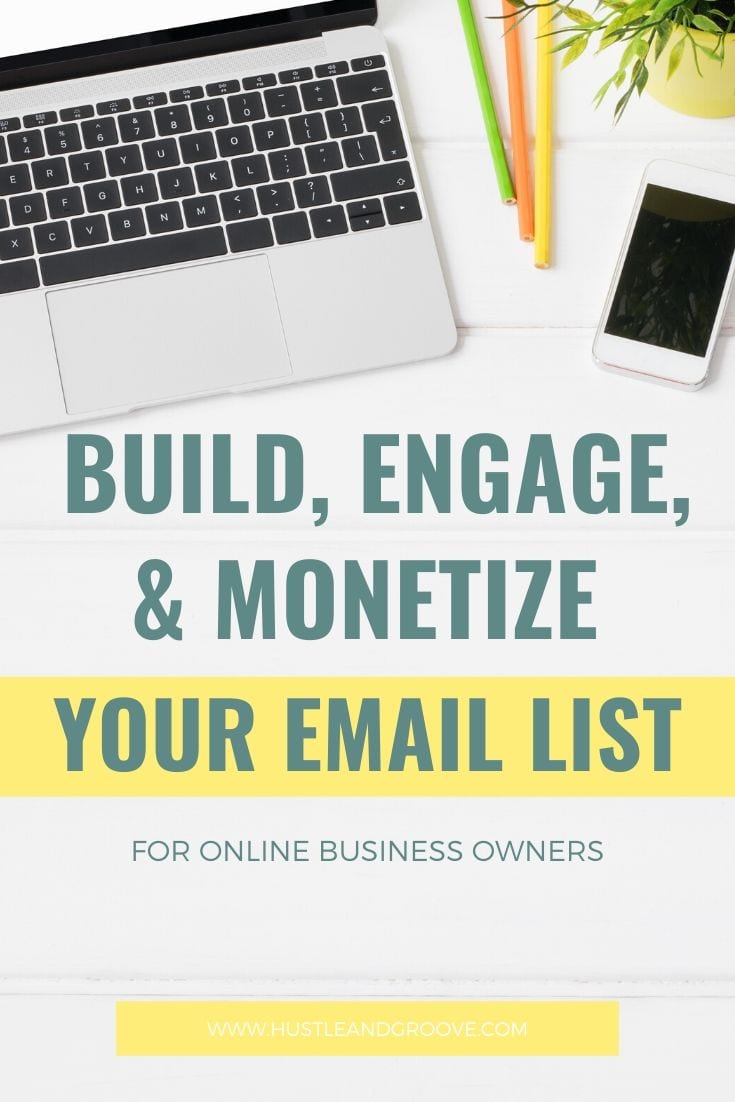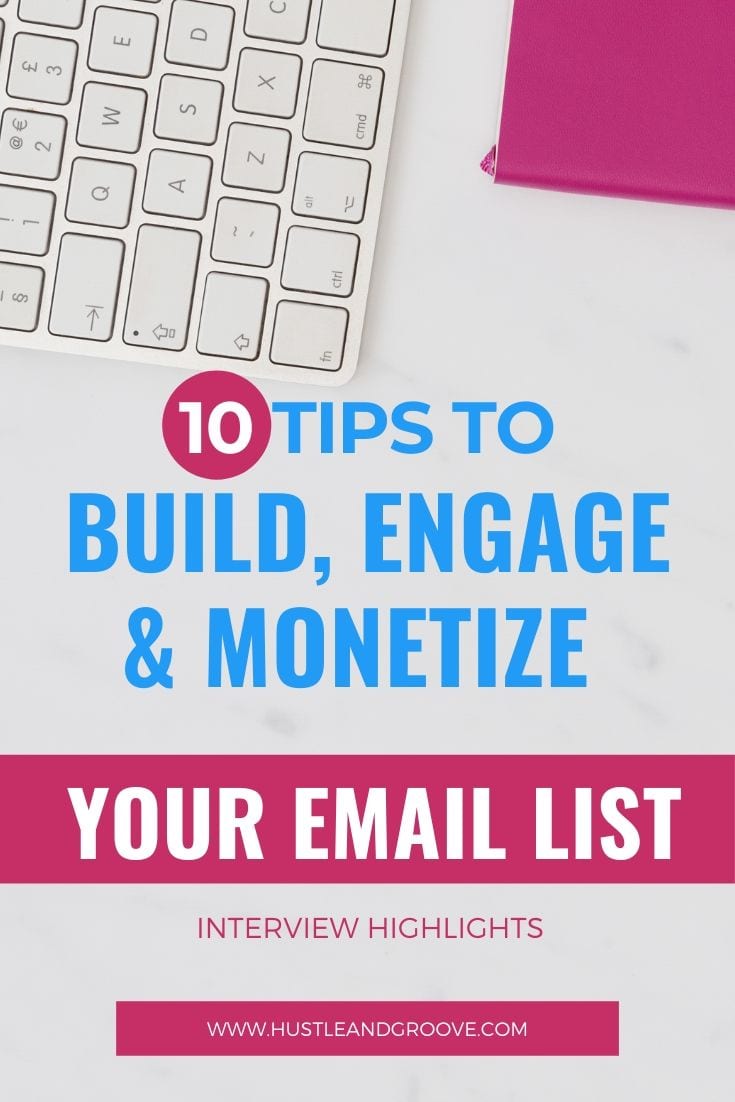My creative agency, GetYourBookIllustrations, specializes in providing authors with high-quality, affordable illustrations. As a keynote speaker at our conference, Children’s Book Mastery, I interviewed Lise Cartwright on a subject she’s more than qualified to talk about, which is how to build, engage and monetize an email list.
Lise broke it down into steps that are easy to understand and do. She offered such helpful insights that I wanted to share them with her audience too.
The highlights of our interview include the following:
- Use your list to help you to become a #1 bestseller with little effort
- How to grow a list
- How to communicate with your list for the best results
- Fantastic tips on how to keep up your open rates and email deliverability
- How to get your audience to take action
- How to easily monetize your list without being pushy
The last question was what Lise’s top tip would be to help authors succeed. Make sure you don’t miss it!
Why You Should Build an Email List
Karen: My first question for you would just be why should writers build an email list?
Lise: I think it’s not just writers. I just think it’s anyone who has an online business. You’ll hear a lot of times people say, ‘The money is in the list’, and it is so true. Once you have a fairly active email list, you no longer have to do a massive launch every time you have a new book come out. You can just send an email to your email list and they will just go and buy it. So an email list is like the foundation of an online business.
Lise: So just like a bricks and mortar business has a customer database, that is essentially what your email list is. And you have the ability to speak to your audience at any time through email. It is still the number one way to actually communicate, sell—not that it’s all about selling—but to just actually communicate and understand your target reader. It’s like the lifeblood of your business.
An email list is like the lifeblood of your business.
What’s the Difference in Having an Email List?
Karen: Awesome, it makes total sense. What difference has it made for you since you started growing an email list?
Lise: So when I started writing back in 2014, I had maybe 500 people on my email list; and the first book I wrote, I actually didn’t have an audience for. So I wrote something from scratch. Fast forward to now and I’m close to ten thousand email subscribers. And now when I launch a book, I’m not having to do this extensive, intense launch. I literally send an email to my email list and say, ‘Hey, the book is live, you can go and grab it’.
Lise: And they get me to number one bestseller on Amazon, without me having to really do a lot, and then they’re also the people that I’m selling my courses and coaching to. So the difference from then to now is significant because it’s a business. I’ve built a business.
Lise: When I just started I had no audience. It was a lot to try and find that audience to understand what they wanted. I didn’t really have any way to communicate with them without having to run ads to get them.
Lise: So that’s the biggest difference from then until now, now I have the ability to communicate with them on a regular basis. I have the ability to make money, and again, I know that I keep saying money. It’s not about money, but it is about money. That is the bottom line. If you’re wanting to have an online business, there is that element that it’s what are you providing in exchange for that money?
Karen: Right, yes exactly.
How Do You Recommend Growing a List?
Karen: And then what would be your recommendations for growing a good list?
Lise: So I guess it really comes down to how well you know your audience. So whenever I sit down to write a book, or certainly when I was first getting started, I really wanted to understand what my audience wanted. And then, how could I offer them something of value in exchange for their email address. So it’s understanding that someone’s email address is their form of currency online. We do not hand out our email addresses easily anymore.
Lise: I like to think about it in terms of what would be something that they would actually pay for. That is an incentive enough for them to hand over their email address.
Lise: The best way to get started is having some type of free gift embedded in your book, whether that’s at the beginning or the end of the book. It’s just such a great way to start building your email list.
Karen: Perfect. I’ve heard one person even had—you know, on Amazon you can look inside—they put a link in that right in the front section so that people could see it even if they didn’t buy their book.
Lise: Exactly, yes. I do that with all of my books.
How to Actually Get People to Read Your Emails
Karen: Yeah, I thought that was really clever because you would definitely get more sign-ups. Okay, I’ve been on your email list for quite a while and one thing I noticed is you’re really conversational. And when you send an email, I open your emails and I read your emails. Most emails I don’t open. So how do you actually do that?
Lise: I think you just have to be you. This is the same approach that I take with my books, is that I want people to feel like I’m sitting down, having a conversation with them. You can deliver information, but it’s how you deliver that information that increases the ability of someone actually opening your email.
Lise: In my very first e-mail that comes out to someone who joins my email list, it’s a fairly long email, and it goes, ‘This is who I am, this is what I believe in, this is who I can help, this is who I can’t help, and if you don’t gel with any of this, then now’s the time to unsubscribe’.
Lise: So it really invites people to leave if it’s not a good fit because I know that I’m not a good fit for everybody, and that’s okay. The same way that you have written your book, think about the person that you’re communicating to. How would they best understand the information that you’re trying to share with them. And just have fun. Be you. It doesn’t mean that you have to create this whole online persona just to make sure that people open your emails.
[Tweet “People will connect with you because you’re you. That’s the best advice I could give.”]
Karen: Nice. I think that’s good advice and it makes perfect sense because I think that is exactly what comes across.
Why Can It Be Good for People to Unsubscribe?
Karen: And then you made a good point now about, you just say to people right at the beginning, ‘If this isn’t a good fit, you can just unsubscribe.’ Can you explain a little bit also why that’s actually a good thing, or important, if they do unsubscribe?
Lise: Yeah, so the thing is, once you start building an email list, whatever email platform you use, and when I’m talking about an email platform, I am talking about using programs like ConvertKit, Mailerlite, ActiveCampaign… I’m not talking about your Gmail account.
Lise: So, in any of those email platforms, they all track certain things. The two things that you want to pay attention to are your open rates and your click-through rate. ‘Open rate’ is how often your e-mails are being opened by your subscribers.
Lise: Now, if you’ve got a whole bunch of people on your email list who don’t connect with you, that haven’t unsubscribed, and are not opening your emails… that impacts your open rate. And so what that ends up doing overtime is it decreases your open rate, which actually decreases the number of people who get to see your email. So it’s a bit of a balancing act and industry averages are different between the niche that you’re in. I’m loosely in the online business niche, and the industry standard for that is around 20%.
Lise: So my open rate is between 30% and 40% because I constantly go through my email list every quarter and do what is called a ‘cold subscriber process’, where I basically go through and say, ‘Okay, if someone’s been on my email list for 90 days and hasn’t opened any of my emails in that timeframe, I’m going to put them through a cold subscriber sequence’, which basically just says, ‘Hey, I see you haven’t opened my email for a little bit, is everything okay? Do you still connect?’, And you know, ‘Here’s an opportunity to just get off this email list’, basically in so many words.
Lise: Because after about 90 days, I can see my open rate goes down if I have more and more people on there. And you’re also paying for those people to be on your email list. If they don’t feel like I’m providing value, unsubscribe, so that then more and more people who are opening my emails actually get to see my emails. So that’s one piece of it.
Lise: And then also click-through rate. So that is where someone is actually clicking on a link inside your email. So obviously the more people that are opening your email, the higher your click-through rate should be.
How Do Deliverability Rates Work?
Karen: Right, okay. And then, you mentioned if you have a very low open rate less people will get to see your e-mail. So how does that work?
Lise: It just means that the lower your open rate is, that people aren’t getting your email. You don’t need to have a massive email list. I’ve seen clients that I worked with who have got 20,000 people on their email list. But their open rate is 15%. So that means a very small portion of that 20,000 people are actually seeing their emails.
Lise: So if they actually were to go through and clean that up and probably delete half of that, their open rate would increase. So you have to work it out. You kind of go: ‘Okay well, yes I might lose a whole bunch of people, but does that mean that more people are now actually going to see my email?’ So it’s based on the email platform. How they send out the emails and how their deliverability piece works. Some email platforms have a much better deliverability percentage than others.
Lise: It’s also a little bit tricky because now with different email programs, you don’t have to necessarily physically open someone’s email, you can preview it and you can see it without actually opening it. Sometimes that can register as being an un-open. So that’s why it’s always good to do that cold subscriber sequence because then people can go, ‘No, I do want to be here’, and then they will start to open your emails going forward.
Karen: Nice, yeah, I think that’s super clever, actually, you don’t just delete them, you do the whole cold subscriber.
Lise: Oh yeah, yeah, definitely don’t delete them without doing that process first.
How do you do a cold subscriber sequence?
Karen: Yeah. And then you say you get them to take some kind of action. So is that just to hit reply, or do they actually click on a button to say, ‘No, I want to stay on your email’ or what do they actually do?
Lise: I mean, this will really depend on your email platform. So in ConvertKit, there is what’s called a ‘visual automation’. So in this automation, they will be tagged as cold subscriber re-engage. I actually go through and identify what that looks like. So ConvertKit tags those people and then they go into the sequence.
Lise: So the first e-mail goes out, and the email is very short. It says, ‘Hey, I noticed that you haven’t opened my emails in the last 90 days. I just want to make sure that you still want to be here. If you do click this link.’ and when they click that link, it automatically drops them down into another tag that says, ‘cold subscriber keep’, and then they don’t receive any further emails in that sequence.
Lise: And then another email will come out about five days later that says, ‘Hey, just popping into your inbox again, if I don’t hear from you, or if you don’t click the link below, you will be removed from my email list at this stage’.
Lise: And so they have about three or four opportunities to click that link and if they don’t, at the end of that, they drop down into another tag that says, ‘cold subscriber delete’ and then I delete them off my list.
Karen: There we go, and then the people who say, ‘No, I want to stay on, they just go back onto your normal list?
Lise: No, I will send them through a short three-day sequence that says: ‘Hey, thanks so much for sticking around and letting me know’, and I’ll probably give them a couple of free gifts to say, ‘Hey thanks for stepping up and saying you still want to be here, I appreciate you. Here are some things that might help you based on where you’re at’. And so, yes, I’ll send them a couple of emails and then they drop back into my normal weekly email sequence.

How Do You Get People To Take Action?
Karen: Okay, very smart system. Then I’ve noticed as well that you are really good at, you know, you will do a little survey, or I remember one time you sent a little video that said you just need help with this book and whether it should have color or not. As I said, I hardly open bulk or marketing e-mails, and when you do and someone asks you to do something, I think most of us, the general tendency is, ‘Oh I’m busy’ and you just delete it or you close it. With yours, once again, I feel like, ‘Oh, I’ll just do this quickly’. So how do you do that?
Lise: I think it’s a personality thing, and if someone has already been opening your emails, they’re more inclined to open another email. I know the email you’re speaking about, was when I was doing my workbook and I was trying to decide whether I was going to do full color interior or black and white. So I thought rather than trying to explain this all in an email, it’s so much easier if I just do a video and actually show people what that actually looks like. And so I think the fact that I did a video versus writing that out, people were more inclined to open that, it’s different.
Lise: And so that’s something else to think about is, how can you change up the norm?
If you want someone to actually take action, do something different.
So I use video a lot now, when I actually want people to take action. And then they get to connect with you more, like they get to see you, hear you.
Lise: And also people love to help. I find 9 times out of 10, people will love to help. So if you’re asking them to help you decide something in your business, then they’ve got a little bit more of a buy-in into what it is that you do. So the next time that you launch a book, they’re more inclined to also buy the book. Because they’re like, ‘That’s right, I just helped Karen figure out what picture she was going to use for the main character.’ And they’re just like, ‘Yeah I really want to see what that looks like now in the entire book’.
Recommendations for Monetizing Your List
Karen: Right, that is actually very true, and then that goes perfectly to the next question I wanted to ask you, which is—I would think pretty obviously if you have people so engaged, it is much easier to now monetize your list—but are there some other pointers that you can give us in that regard?
Lise: Yeah, so I would say that you obviously don’t want to sell to your email list all the time. Because that definitely doesn’t work either. I think, at the end of the day, if you provide more value than you are always asking for money, then you’ll be fine.
Lise: So the whole 80/20 rule here applies. 80% value, 20% actually asking, but it’s also the way that you ask. So whenever I’m thinking about sending a sales email out to my list, I think through, okay, how can I make this a win-win for everybody? How can I make it so that it’s easy for them to take action? But that I’m also providing value at the same time.
Lise: So you can do an entire email that actually teaches them something. Then at the end of that email go, ‘If you’re ready, or when you’re ready, here is how you might take it a step further, and here’s how I can help. If you want to check that out, here’s the link’. So you don’t have to even make it feel sales-y. Just do what comes naturally to you.
Lise: So I just always try to think about how I can provide value, and then how is it that I can help that person. So that’s why this survey piece that I do, I have that quite regularly embedded in my email. Particularly when someone is relatively new to your list, you want to find out more about them. What are they struggling with? How can you help them further? And then that will lead you into creating solutions. That’s why I have so many books, because I ask questions. And I’m like’ ‘Oh, I can write a book about that to help people’.
Lise: So think about it from that perspective. How is it that you can help your readers? So if you’re always coming from a place of service or from a place of, ‘I actually just want to provide value, I just want to help.’
Lise: It is a mindset thing, when we start running our online business — and you are running an online business if you’re selling books. So if you’re selling a book and you have put all this beautiful love and creation into this book, why shouldn’t you get paid for that? And at the same time, it’s also helping somebody else. So you just have to think through that and then just go, ‘Okay, well, let’s put myself in my reader’s shoes. What would make this an easy yes for them? What would that look like?’
Lise: Then you can probably also put yourself in those same shoes and go, ‘Well, how would I like to receive an email where I’m offering something of value?’ So if you can think about it from that perspective, it’s actually relatively easy to monetize your email list once you get to a certain point. Particularly if they’ve gotten used to buying your books when you launch them.
Lise: It’s not difficult to monetize your list. You just need to know what you’re selling and how it benefits them, and you make it a value add.
Karen: I love that answer. Cool, and then, you did mention now, of course, don’t sell all the time and provide value, which I think is perfect.
Ready to make money in your author business on autopilot? You’ll learn all of this and more inside The Digital Business Lab. Click here to learn more.
Things to Avoid Doing With Your List
Karen: What other things should you avoid with your list?
Lise: Avoid not sending emails. You need to be communicating with your email list regularly. Basically, until you hit about 5000 subscribers, you can get away with a mailing once a month.
Lise: So over-communication is key in things like this to make sure that your email list doesn’t go cold, and an email list can go cold very quickly. If they haven’t heard from you within six weeks, that email list is cold. So make sure that you are sending them an email at least once a month. Twice a month is probably the ideal.
Lise: Once you get to five thousand subscribers, once a week is actually even better for them to continue to consistently hear from you, to keep your open rates going, but do not feel like you have to do that if you don’t have something to say.
Lise: Then the other thing that I would say is affiliate marketing is a really good avenue to monetize the list in the beginning. Maybe you have got your email list of five thousand subscribers. You should be making five thousand dollars a month from an email list at that size. It’s like one dollar per subscriber—over a period of twelve months. Obviously it’s not always going to be an exact science.
Lise: And just be open and transparent. I’m generally fairly transparent with my email list. Share your downs as well as your ups. Stuff still happens, and your email list will appreciate the fact that you are sharing those things.
Lise: So, yeah, those are probably the two main things: Make sure you’re communicating with them, and then make sure that, if you are monetizing, that it’s a good fit.
What is Your Top Tip to Help a Children’s Book Author Succeed?
Karen: That’s actually beautiful. All right. My last question for you is what would be your top tip to help a children’s book author succeed?
Lise: I’ve worked with children’s book authors before, and they struggle to kind of think through, “Yeah, I can build my email list, but what am I going to send to them?”. So think about it from the parent’s point of view, because that’s the person purchasing your book. You are not selling directly to the child. So, how are you helping the parents through this book? Think about it from that perspective.
Lise: For example, if your children’s books are predominantly about helping a child through adoption, how could you expand that further for the parents? What are some tips and strategies? Because I’m assuming that if you’re writing about that topic, that you know some things about that. You’re writing from experience.
Lise: So, my biggest tip would be: Know your audience. Understand how your book helps them, and then when you are communicating with them, expand on that. And then also get them to buy in and help you figure out what your next book topic is going to be. Because the more that you ask questions, the more that you’ll discover what they actually want. And then you’ll have no problem coming up with more book ideas. It becomes a lot easier.
Karen: Yeah, I think that’s a very key point. Thank you so much.
[img_text_aside style=”2″ image=”https://hustleandgroove.com/storage/2020/03/Karen-Summit.png” image_alignment=”left” headline=”” alignment=”left”]Karen Ferreira is an illustrator, award-winning creative director and owner of Get Your Book Illustrations. She helps self-publishing authors get amazing, affordable illustrations. She has spent many hours learning about self-publishing and enjoys helping others succeed in this field.
[/img_text_aside]


